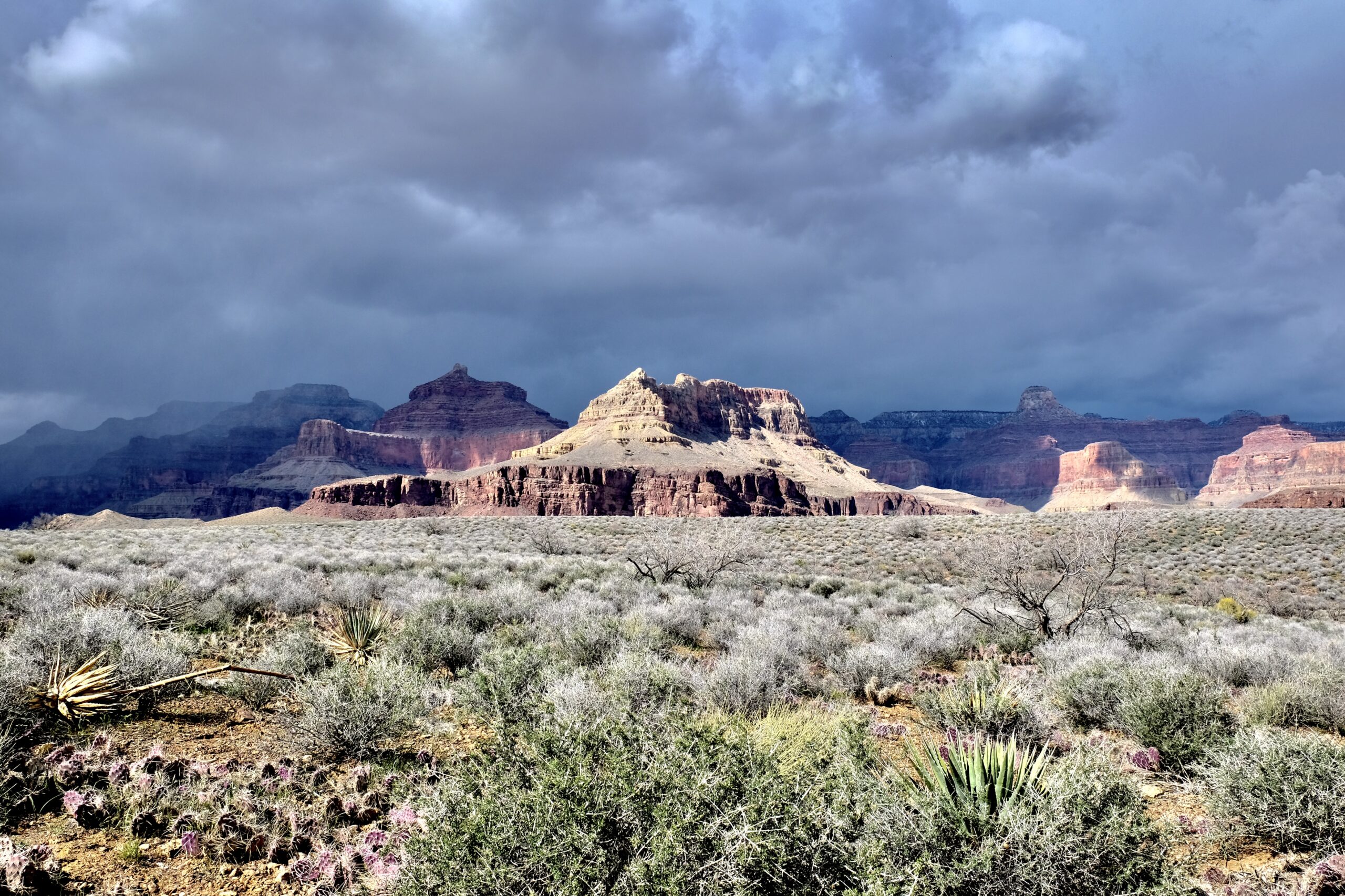It’s day two of my backpacking trip in the Grand Canyon. I’ve set up camp at Havasupai Garden, and the rain, hail, and wind that drove me into my tent for an early afternoon nap has passed overhead. I’m heading out for a hike along the Tonto Platform to overlook the inner canyon from Plateau Point, 1.5 miles from the campground.
The rain and hail had blown away from the campground, but hadn’t cleared completely, leaving lowering skies and moody lighting across the plateau.
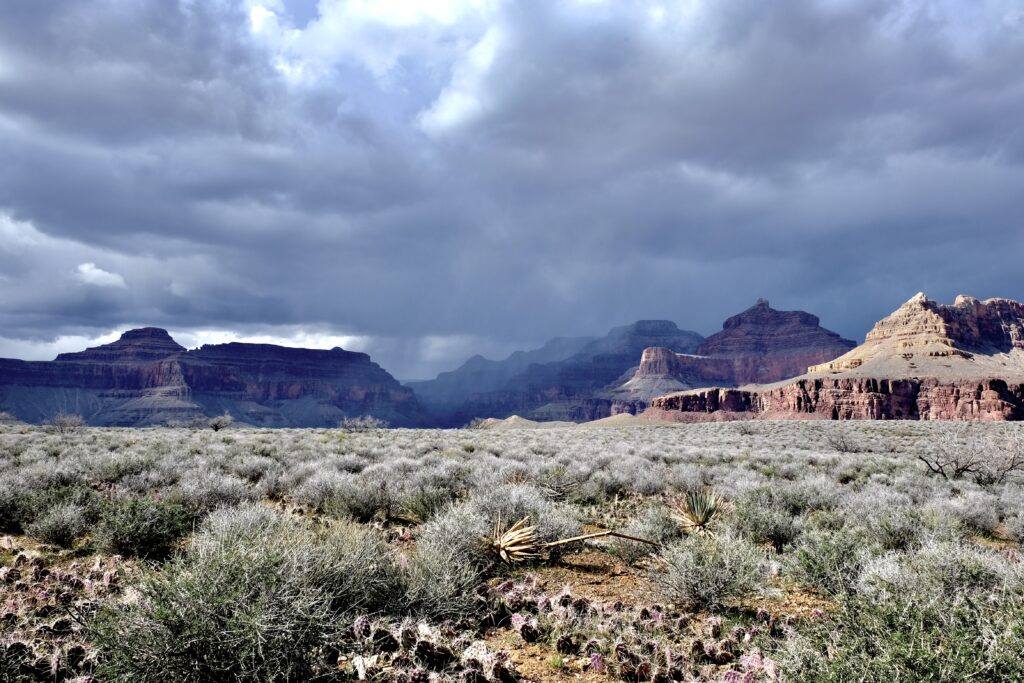
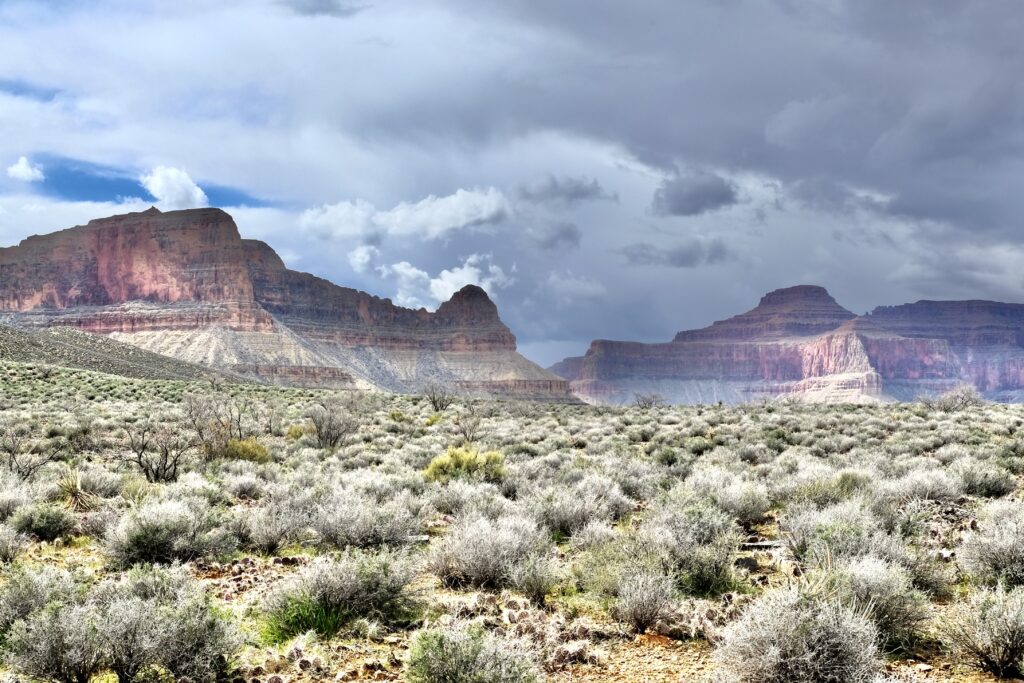
From the point, the view over the canyon and down to the river is breathtaking. I have too many favorite photos to choose one or two.
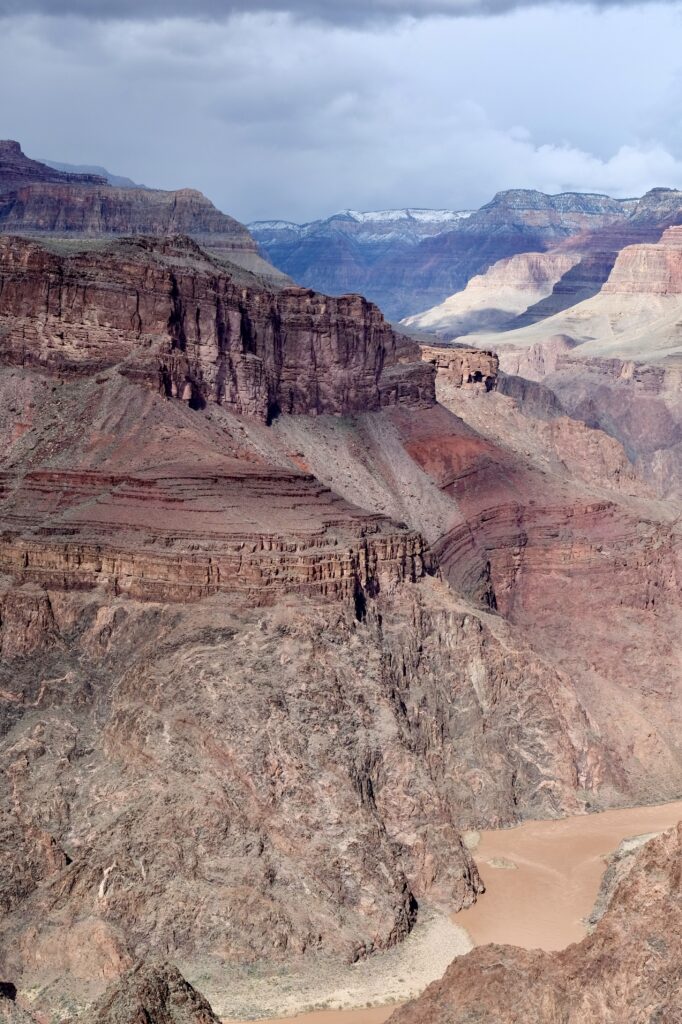
The sharply slanted rock layers are the remains of the Grand Canyon Supergroup— rock layers sitting at the great unconformity between the Vishnu schist and the Tapeats sandstone layers that have disappeared completely in most places, except where a fault dropped them down and they were protected from weathering.
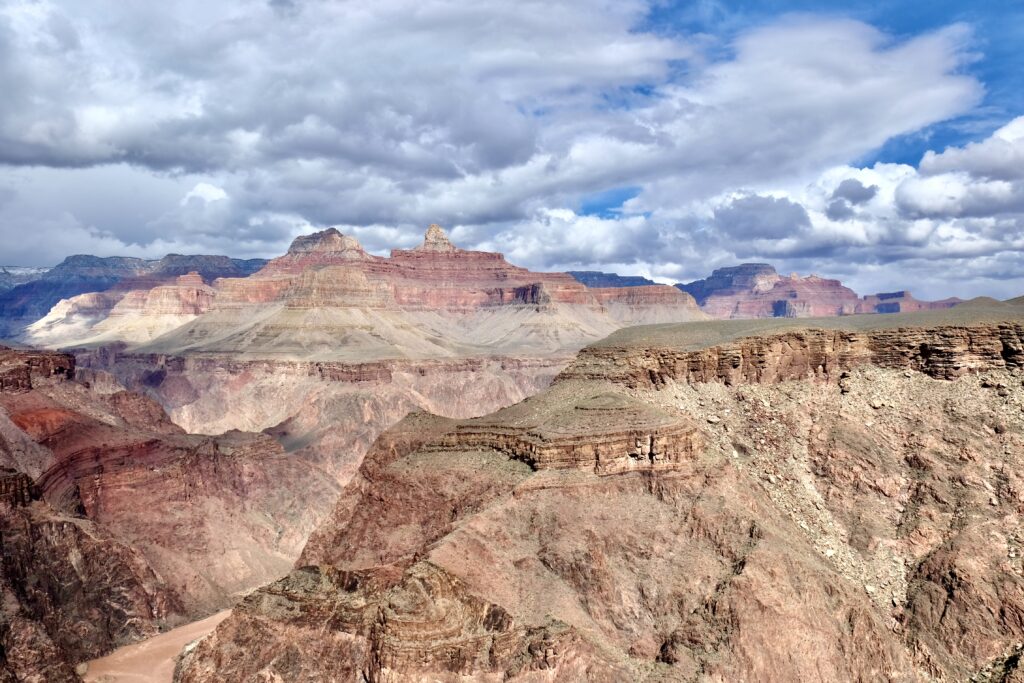
The ribbon of green along the creek marks the trail I climbed earlier in the day.
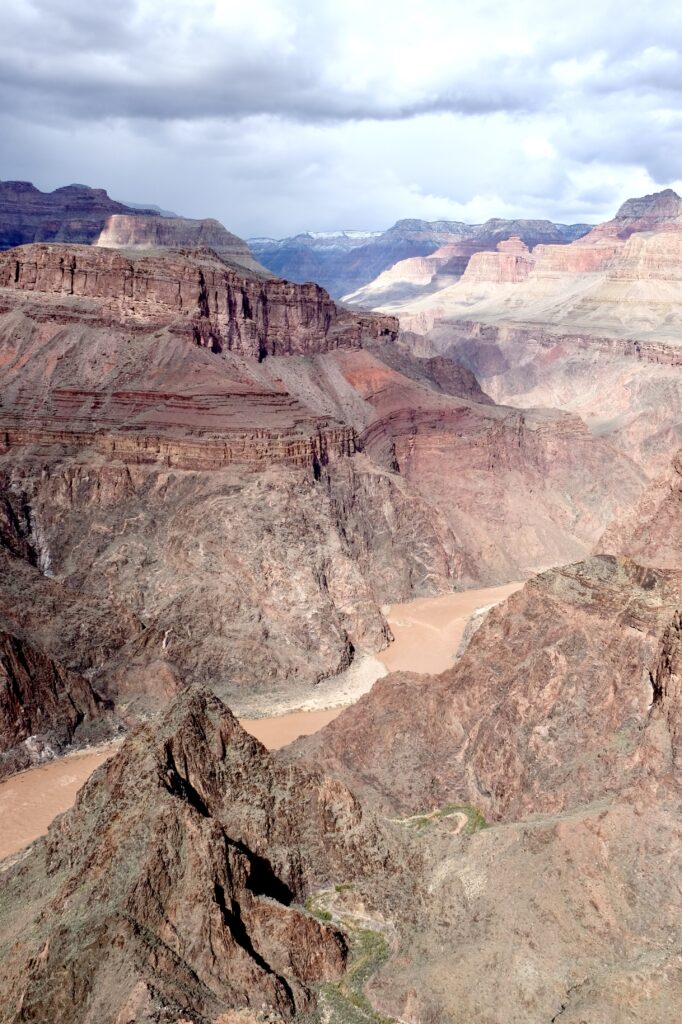
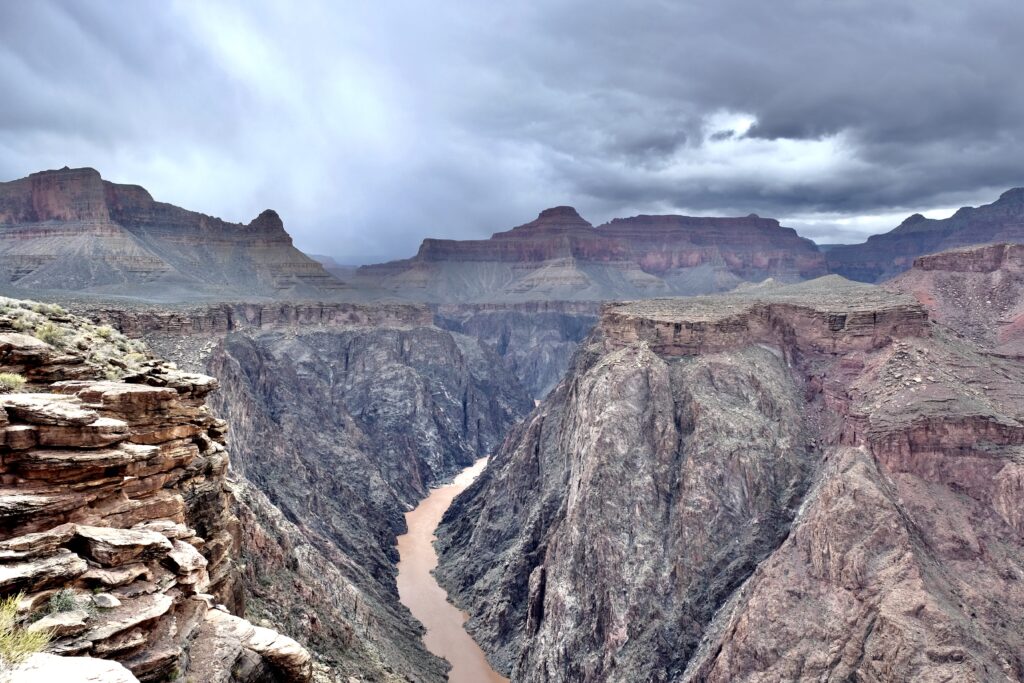
While most of the plateau is covered with rocky soil and desert plants, the canyon edge exposes the plates of Tapeats sandstone formed at the dawn of the Paleozoic era from the beaches and shoals of the proto-Pacific ocean. Some show evidence of waves and current, while some show fossilized worm burrows1.
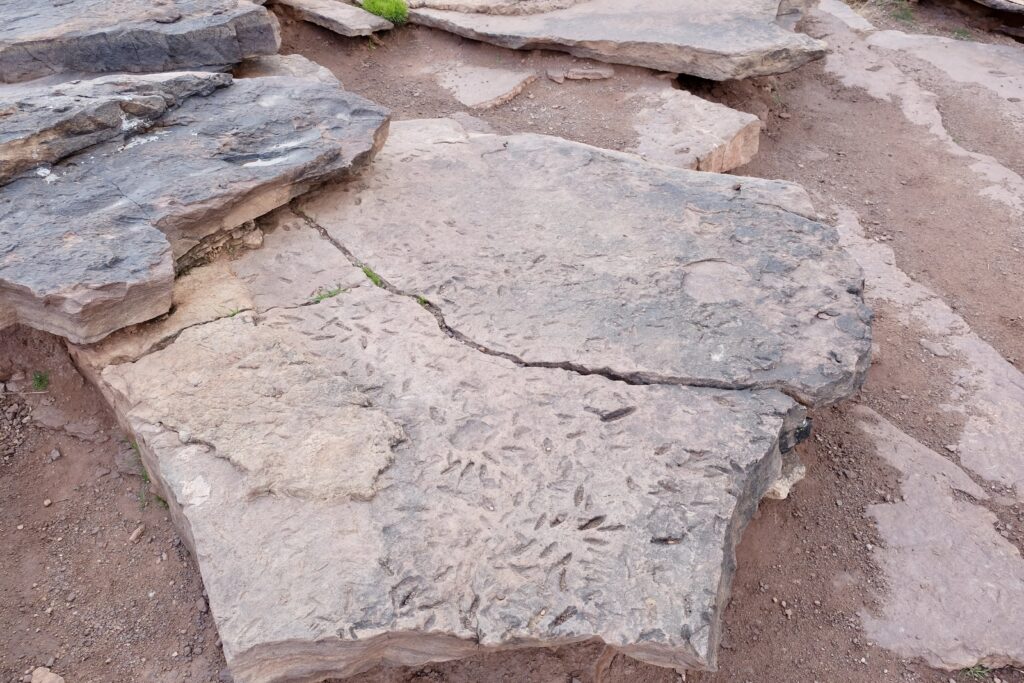
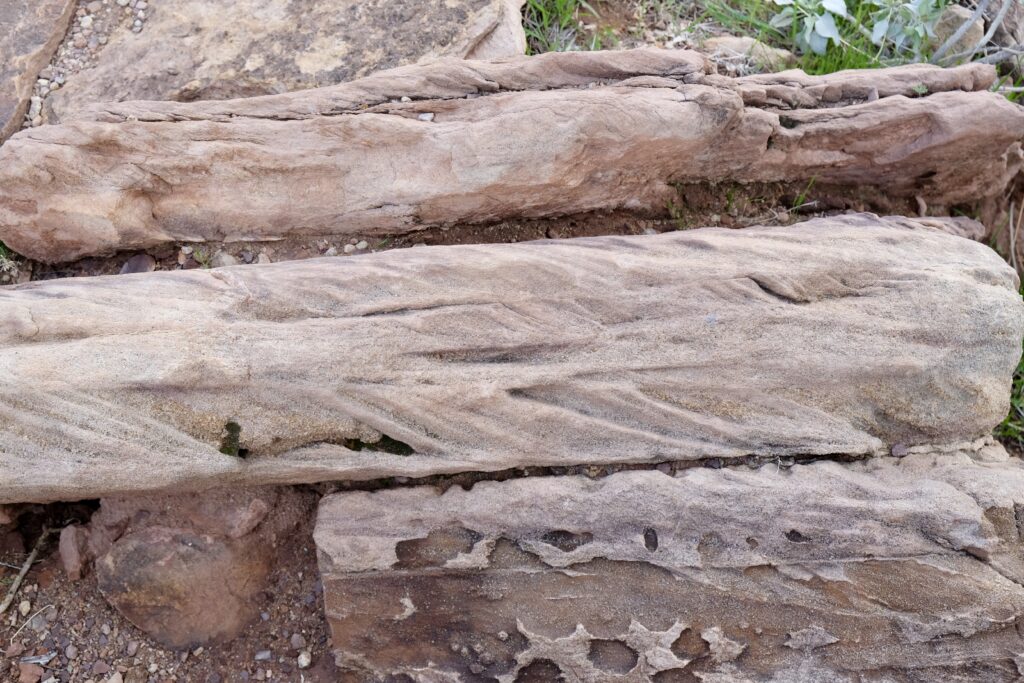
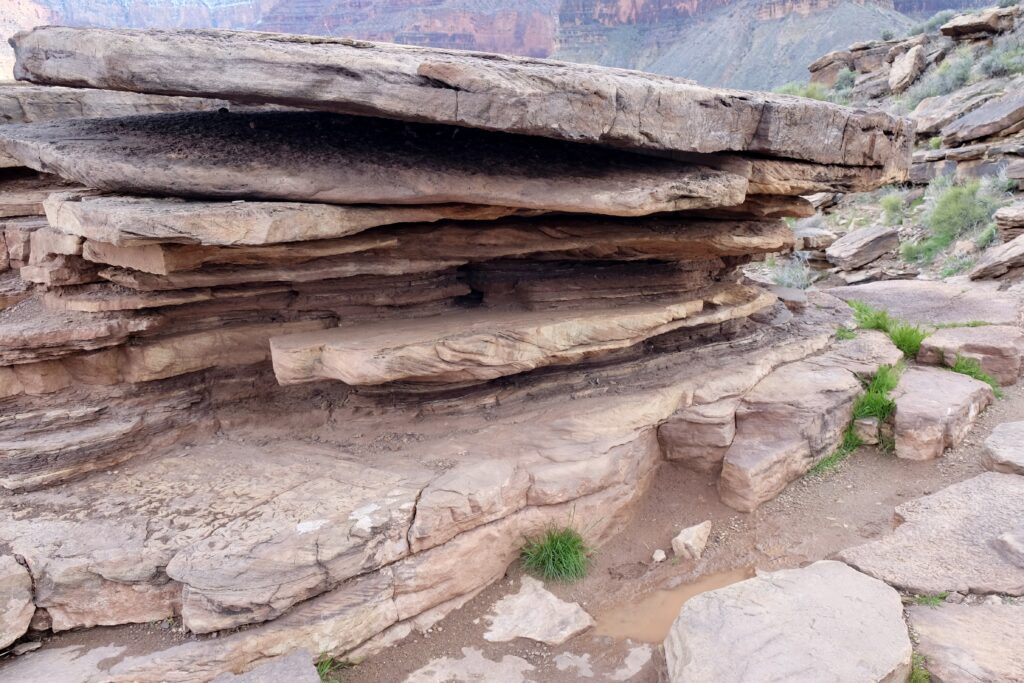
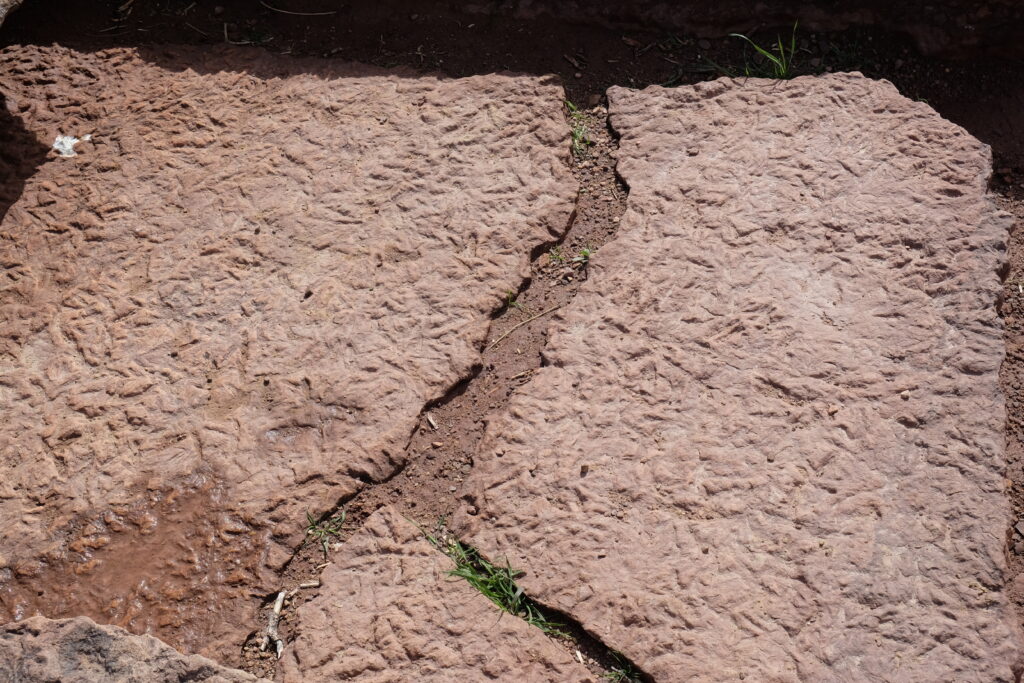
Looking across the typical shrubs and cacti of the high-desert, it’s hard to believe this was all formed by an ocean.
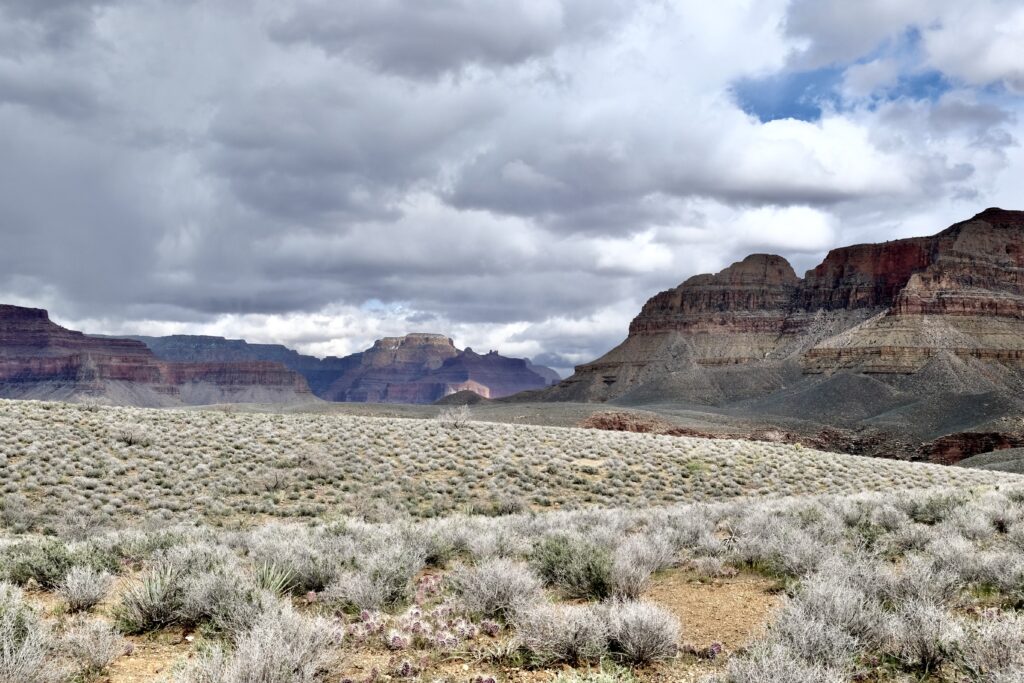
The Havasupai Garden campground is nestled in the bright green among the cottonwood trees. The massive red cliffs towering beyond it are what I will need to climb the next day to get out of the canyon.

1 Lon Abbot and Terri Cook “Hiking the Grand Canyon’s Geology” the Mountaineers Books 2004

